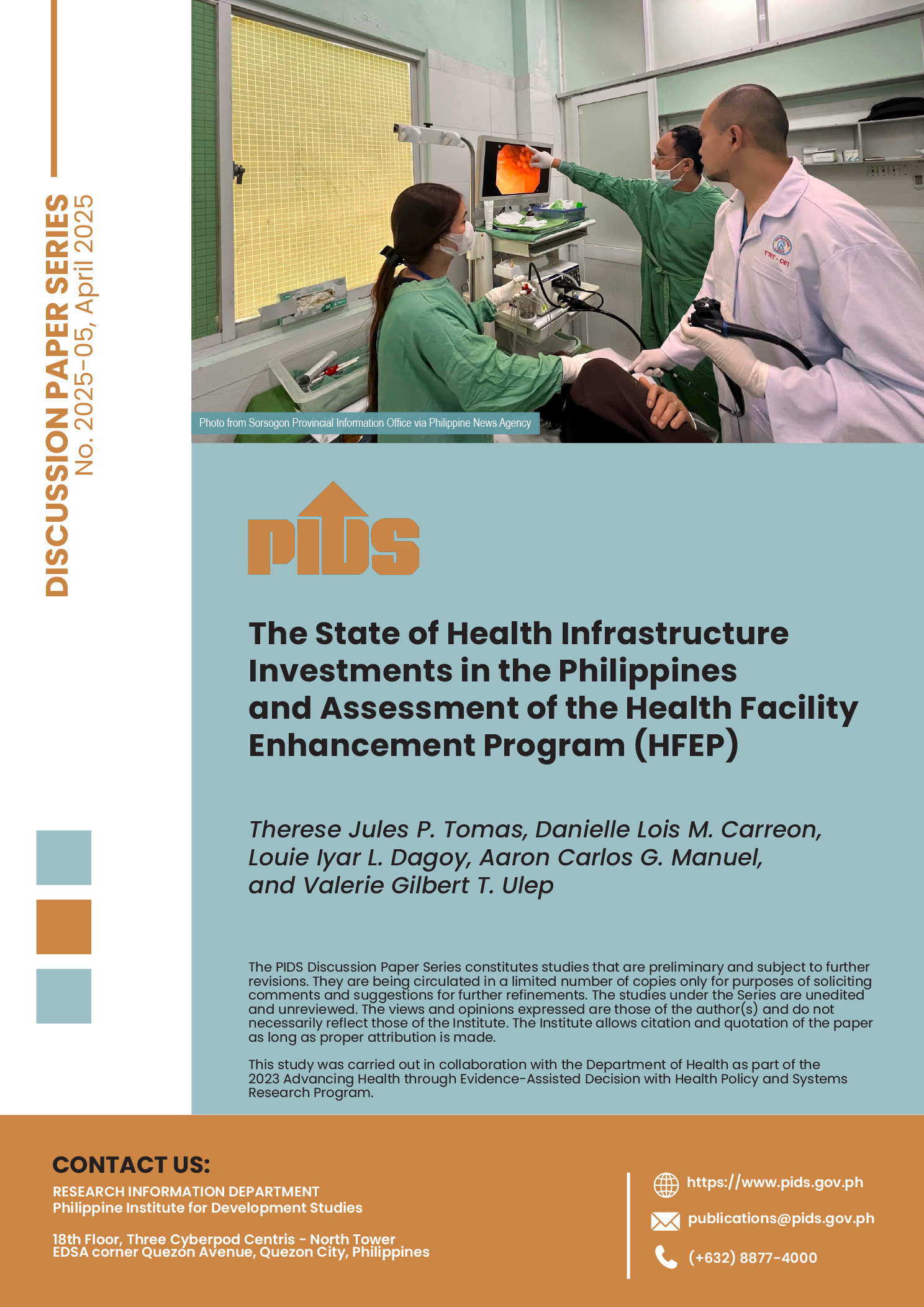With the higher economic growth of the economy, the government is urged to allocate bigger budget for healthcare services and enable this sector to contribute a bigger share to the GDP from the current 3-3.5 percent. Senior health consultant Oscar Picazo of state think tank Philippine Institute for Development Studies (PIDS) disclosed at the recent launch of the 11th Development Policy Research Month (DPRM) that the government only allots 3 to 3.5 percent of its gross domestic product (GDP) for the health sector, much smaller than the World Health Organization’s recommendation of 5 percent of GDP for health. PIDS Vice President Rafaelita Aldaba also noted that other emerging economies usually spend seven to eight percent of their GDP for education training and health. Picazo noted that the higher economic growth makes it possible for the health budget to increase, especially the recent passage of the Sin Tax Law on cigarettes and alcohol, which can provide an estimated incremental revenue of P84.3 billion in 2013. The tax collection from this law is seen rising to P139 billion in 2016. Picazo, however, pointed out that the absorption of these additional resources will be a major challenge. "The sin taxes have already been committed, and the question then is how could we absorb or spend this money equitably so that the poor will benefit from health services,” Picazo said. Picazo also mentioned various challenges and opportunities for making health more inclusive in the Philippines, which emphasized the need for a higher GDP allotment for the health sector. "The Aquino administration’s Universal Health Care program or Kalusugan Pangkalahatan is deliberately designed to focus on the poorest two quintiles of the population, but expansion of benefits has not reduced the out-of-pocket spending on medical care that has remained very high,” Picazo said. Dr. Irma Asuncion, Director of the National Center for Disease Prevention and Control of the Department of Health, revealed there are 1,819 hospitals in the country, which has a total bed capacity of 101,914. This is equivalent, she said, to a population-to-bed ratio of 1 bed per 960 population. "Our population is growing at 1.8 million a year, but our hospitals clearly cannot accommodate this burgeoning population,” Picazo noted












